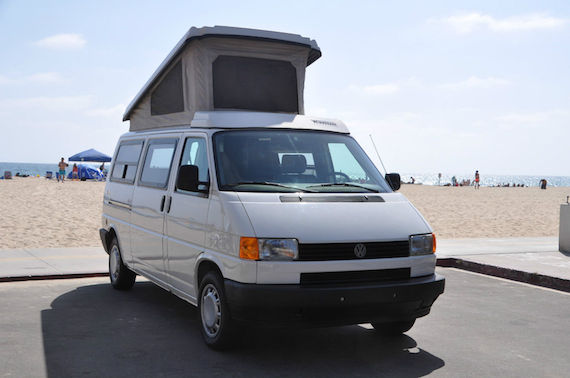And now for something completely different. If you walked into your local Volkswagen dealership as a Westfalia devotee when the new Eurovans launched in the early 1990s, you were likely to be a lot disappointed. These came to the U.S. starting in 1993, and there were two configurations – the Eurovan and the Multi-Van (MV for short). The difference was the seating configuration, in that the MV had rear-facing seats behind the captain’s chairs and a table in the middle. Easy, right? Well, then there was the Westfalia model. Volkswagen hadn’t forgotten how successful the T3 was with the pop-top, so a new aerodynamic folding roof arrangement was added to the MV. But here was the catch – the new Westfalia didn’t have the camping gear, but instead was effectively the same as the previous pop-top only Weekender. It was called the Weekender, too.
The full campers were only converted by Winnebago and based on a lengthened chassis. These started being produced in 1995 and replaced the Westfalia in the lineup but were not called Westfalias. But Winnebago also produced an extra-fat and extra-expensive camper, too – the Rialta. This took the front cabin of a Eurovan, the taillights from a Ford Ranger, interior fabrics from your Pyschologist’s waiting room and a lot of fiberglass in the middle to make a small RV. Prices started around $41,000 – in 1995, mind you.
Though rare, you’ve likely seen one before, but unless you owned one (and maybe even if you did…) you probably didn’t realize there were actually four different Rialta model configurations. Beyond that, Rialtas also followed the Eurovan production cycle with power, so early models had the 2.5 liter inline-5, replaced in ’97 by the 12 valve VR6 and finally the 24 valve VR6 in the 2001 model year. What we have here is an early Rialta in the most popular 7-seat QD configuration, powered by the 2.5 liter:


